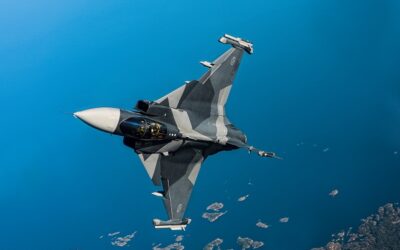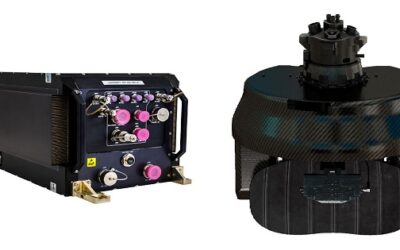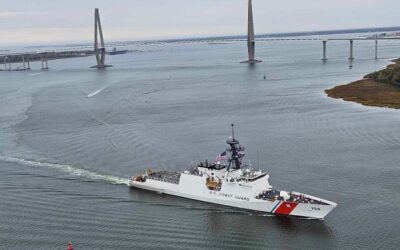Turkish Defence & Aerospace Industry News Roundup
An overview of Turkey’s procurement of the Russian S-400 TRIUMF. MT examines the issues surrounding this U$2.5 billion deal, which has the potential to reshape, in some respects, aspects of the regional balance of power.
Turkey’s procurement of the Russian S-400 TRIUMF air and missile defence (AMD) system, negotiated by Presidents Recep Erdogan and Vladimir Putin during the latter’s visit to Istanbul in October 2016 and signed in Ankara some 14 months later, has brought issues of capability management and technology integration as well as being a political football for national and foreign commentators.
The main air and missile defence capabilities of the Turkish Air Force (TurAF) currently consist of over 30 fixed and transportable 3D air surveillance radars that provide a real-time air picture of national airspace. Individual components include: Air Control Group Command; seven Control Warning Centres/Posts (KIM/KIP); four E-7T AEW&C aircraft serving in Airborne Warning Control Group Command; ground based MIM-14 NIKE HERCULES surface-to-air missiles (SAM) in 15th Missile Base Command; and tactical datalinks providing C2 between them all. TurAF – with no new-generation long-range AMD system capable of intercepting ballistic missiles – is one of the few countries in the world (and the only NATO member) currently meeting its air defence requirements with F-16s.
Turkey finalised an agreement with Russia to procure the S-400 TRIUMF (NATO reporting name SA-21 GROWLER) in September 2017 and made a $100+ million downpayment in December. The order is for two S-400 systems (or battalions), totalling four batteries, with each battery consisting of nine transporter/erector/launcher (TEL) vehicles. Turkey has negotiated a Ruble-based credit deal with Russia, thus saving 3% on the total debt, according to official sources.
The current plan is for delivery in mid-2019. The end game for Turkey is that TurAF’s S-400 regiment, which is likely to be based at Murted/Akinci airport base in Ankara, will be able to engage up to 72 different targets simultaneously with 144 missiles out to ranges of 400km – current engagement doctrine calling for the launch of two missiles per target to ensure destruction.
System Integration
From a system integration perspective, the real-time air picture of Turkish airspace is generated by the 30 ground-based radar systems mentioned above, combined with data from the four E-7T AEW&C aircraft, in a network-based operation across seven different regions with the aid of datalinks such as LINK 11B and LINK 16. This picture is then transformed into an identified air picture – encompassing all air traffic in Turkish airspace – by the Combined Air Operation Centres (CAOC) in Eskisehir and Diyarbakir and passed on to Combatant Air Forces Command and ultimately the decision-making command committee. In this manner, air operations can be monitored in real time via the CAOC, and the picture instantly updated when required.
In addition to the Turkish Mobile Radar Complexes (TMRC) in TurAF’s inventory, procured in 1994-2000, there are five different types of early warning radar operated by the Air Radar Site Commands and procured under various phases of the NATO Security Investment Programme (NSIP). As part of the latter initiative, four RAT-31 D/L radars were procured in 2008-2012 and are now being upgraded with tactical ballistic missile (TBM) acquisition and tracking capabilities, on completion of which they will be the only radars available to TurAF providing such capabilities.
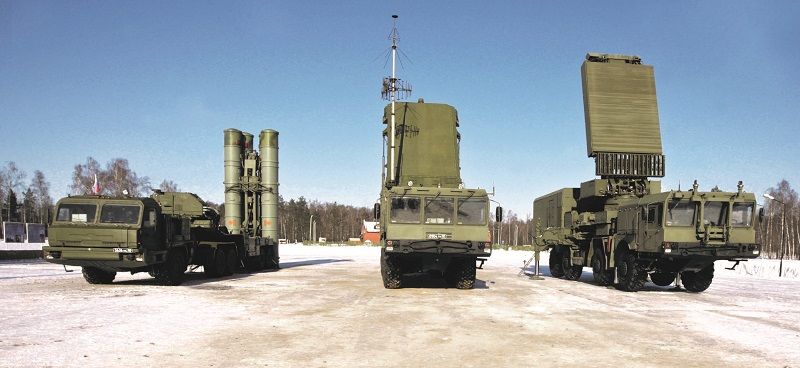
When they enter service, the S-400s will work with the TMRC complex, consisting of 14 S-band 3D TRS-22XX radars and 18 C3 systems connected via the national RadNet network, completed in 2008 – or, at least, could be connected if the relevant source code is forthcoming from Russia.
The TMRC can exchange tactical air pictures with NATO’s E-3A AWACS aircraft and Turkey’s E-7T via Link 11B and with the Turkish Land Forces Command (TLFC) HERIKKS system via Link 1 – the current upgrade to Link 16, when complete, will make it possible to transit weapon control codes direct.
Meanwhile, S-band 3D early warning radars with active electronically scanned array antennas are being procured from Aselsan: 18 fixed (EIRS) and four mobile (TEIRS). The four latter systems, with 470km range and TBM acquisition and tracking capabilities, were ordered in June 2016 for delivery in 2020, some to replace legacy systems and the others to be deployed to fill gaps in low-level air target detection.
Air Control Centres known as Air Command & Control, Recognised Air Picture, Sensor Fusion (ARS) facilities have been established at Eskisehir and Diyarbakir (the second, financed nationally, expected to be commissioned in 2018) as part of NATO’s Air Command and Control System (ACCS). Either is capable of reporting and control for all Turkish airspace and are capable of mutual backup, so subsidiary control centres will be wound down over time.
Besides the three HR-3000, three TPS-117, one RAT-31SL/T and seven RAT-31DL radars procured through NATO funds, some TurAF Air Radar Site Commands are equipped with other radars: L-band AN/FPS-88 search and AN/FPS-89 and S-269 altitude radars, late 1960s technology in service since the 1970s. These are gradually being replaced with more modern systems.
TRIUMF Integration into the TurAF’s Air & Missile Defence Network
This will be by far the most challenging aspect of the entire S-400 procurement project. The system features an advanced ECCM capability, allowing it to operate in an intense jamming environment. Its target classification capability comes from the integrated IFF system: the radars can detect, track and engage multiple targets simultaneously from considerable distance. Radar control is maintained automatically by the 55K6E Mobile Command Post and both the TEL and the 92N6E GRAVE STONE radars (for midcourse guidance support to 9M96 missiles) also have datalink antenna.
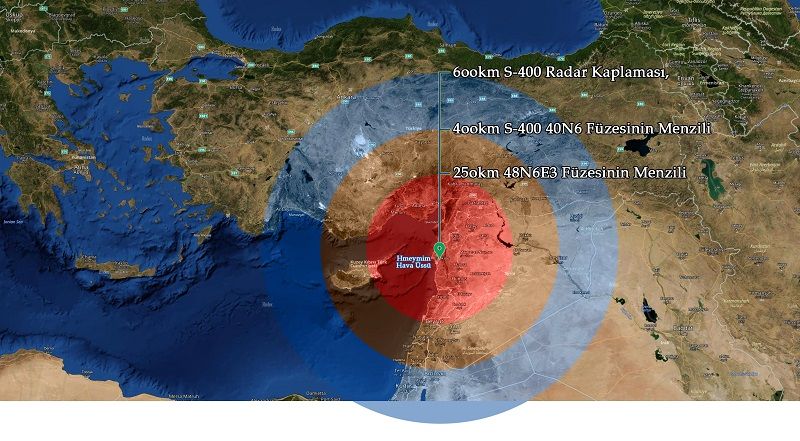
A specific challenge in the integration, though, will be ensuring the S-400 system can communicate seamlessly with the layered air defence architecture Turkey has already built up. There have been numerous public domain reports that the TRIUMF will not be linked to NATO’s Integrated Air & Missile Defence System (IAMD) – and would certainly not be able to work in conjunction with AEGIS ASHORE or the European Phased Adaptive Approach (EPAA) facilities. But then – Turkey did not ask to be able to do so, as NATO Secretary General Jens Stoltenberg made clear in mid-September.
There are two critical points that need careful consideration: use of the digital interface and the list of options other than integration. Technically, there is no reason why the Russian digital interface cannot be integrated at an adequate level with existing NATO infrastructure: from a security standpoint, it is an entirely different matter, even if strong firewalls were to be created and personnel security certification tightened. At the purely national level – which is where it seems TRIUMF is destined to be used in Turkey – integration with systems such as RadNet and HERIKKS through digital data interfaces with ‘plug and fight’ capability will only be achievable if Russia gives Ankara access to the source code. Which seems unlikely, given that official Russian sources indicate ‘local content’ knowledge of the system will amount to no more than 15% of the contract value. Absent source code, the S-400 batteries will be unable to work to their full potential.
Ballistic Missile Defence (BMD)
The BMD aspect is far more complicated. In a BMD application the NATO IADM system and the S-400 batteries are capable of performing their tasks without satellite warning support, though at a limited level of efficiency. This deficiency could be compensated for by using E-7T aircraft, which are claimed to be capable of detecting ballistic missile threats at 3,000m altitude from a range of 610km or acquiring a target flying at 150m from a distance of 390 kilometres. Even though the S-400 is a long range air defence system, it is capable of conducting BMD intercepts with the 9M96E series missiles at an altitude of 30km and a range of 120km, thereby offering TurAF a ‘lower layer’ tactical BMD capacity.
Given the likely ballistic missile threats Turkey faces, a ‘top layer’ system is also required, enabling long range defence against medium range ballistic missiles (MRBM) or, possibly, intermediate range missiles (IRBM) operating at the edge of space.
With the 48N6E3 missile, the S-400 will be able to intercept the MRBM at 27km altitude and up to a 60km range: with the 40N6E missile, MRBM/IRBM intercepts become possible at an altitude of 185km and a 400km range. But that is stargazing to an extent – ‘top layer’ defence using S-400 will only come once full integration has been achieved and when sale of 48N6E3 and 40N6E missiles to Turkey becomes possible.
The S-400 batteries may, however, achieve both ‘low and ‘top’ layer BMD tasks in conjunction with the Enhanced Long Range Area Air and Missile Defence System (GUMS/UMBFSS). Eurosam was appointed technical support provider for this programme in 2016 – but will need to integrate the two systems fully for the S-400 achievement previously mentioned to be possible.
There are risks involved if inadequate oversight and control is exercised in the integration process. Maintaining sovereign control of as many activities as possible and making maximum use of generic data in simulations to validate and verify integration success will help to avoid the nightmare scenario: that a failure in communications between NATO and Turkish algorithms results in NATO aircraft (in Syrian airspace, for example) being identified as hostile by the S-400.
Recent speculation has centred on Turkish industry’s capacity to develop software that could effectively ‘reprogramme’ the S-400 IFF subsystem to reflect a Turkish nationally controlled threat library – possibly to be factory installed in Russia prior to delivery. This will still require Russia to share at least some level of source code with Turkey, as well as Interface Control Documents (ICD). The same would apply to the alternative case – that the S-400 be equipped with a nationally-developed IFF system.
TurAF’s inventory of Modes 4, 5 and 5/S IFF systems consists of equipment procured from foreign sources and made in Turkey under license. Aselsan, however, is now working on a national Mode 5/S IFF interrogator and transponder, with work proceeding on the long range (450km) variant. Interrogation ranges of existing IFF systems are, however, well below the 91N6E radar’s 600+km acquisition range or the 400km engagement range of the 40N6 missile.
The Turkish-developed IFF system with the longest range right now is the sensor developed by Aselsan for the CAFRAD radar to be mounted on the TF-2000 air warfare destroyer, which has a reported interrogation range of approx. 460km – for which field tests will be conducted this year. There is also a further R&D project under the auspices of the MoND, which is focused on air to ground IFF, with a requirement that the system work at all ranges covered by the weapon system with which it is engaged.
Given the power of the relationship Presidents Erdogan and Putin appear to be enjoying, indications are that a solution to the problem of reprogramming the S-400 IFF system with a Turkish national threat library may well be agreed in coming months. Should this prove impossible, and the requisite source codes not be forthcoming, full integration of the S-400 into Turkish air defences could not occur. System operators would have to achieve target acquisition manually, thus considerably degrading optimal operational efficiency.
Turkish airspace regularly sees over a thousand flight movements in a 24-hour period. If S-400 IFF systems are not fully integrated, for whatever reason, the potential vulnerability of individual aircraft becomes a major issue, and the spectre of unintentional catastrophic incidents grows exponentially. To an extent, this could potentially be avoided by use of the 600km-range 91N6E radar, or E-7T aircraft or the TMRC, to identify ‘targets’ beyond Turkey’s borders and for radar operators to manually track and classify the ‘target’ as a legitimate or hostile trace. Operators on the E-7T – who could conduct IFF interrogation through the aircraft’s systems at a range of over 550km – could cue S-400 command posts through normal communications channels (though use of a NATO datalink facility would be impossible unless Link 11 or Link 16 had been integrated into the S-400), or via SATCOM, potentially from considerable distances.
The S-400 operator could then lock in the target manually as soon as it appeared on his radar. This may be a workable solution on exercise in times of peace – just about. It is entirely questionable whether this is an acceptable workaround in a highly contested and electromagnetically chaotic battlespace. Turkey is buying a very capable missile. Will it be able to take full advantage of that capability?
Kublai Han

